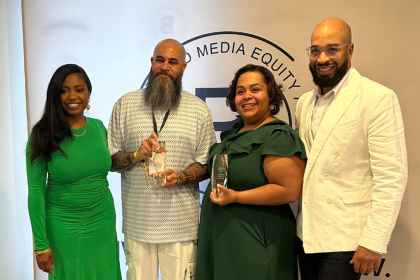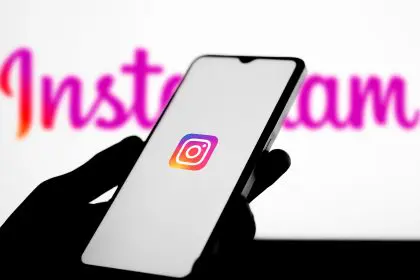The most revolutionary products aren’t just answers to existing questions. They’re answers to questions people haven’t even thought to ask yet. Think back to the first iPhone, Netflix streaming, or electric cars before Tesla made them cool. None of these were responding to focus groups begging for touchscreens, on-demand movies, or battery-powered vehicles. These were solutions people didn’t know they wanted until they existed.
So how do you create something people will crave before they even realize it’s missing from their lives? It’s not magic or pure luck. There’s a method to this seemingly impossible anticipation.
The problem with asking what people want
The classic approach to product development starts with customer research. “What do you need?” “What problems are you facing?” “How can we improve our existing offerings?” While this feedback loop is valuable, it has built-in limitations.
People are notoriously bad at imagining what they might want in the future. They’re constrained by what they know is possible today. Henry Ford supposedly quipped that if he had asked people what they wanted, they would have said “faster horses.” Whether he actually said it or not, the principle stands. Most people can only articulate incremental improvements to what already exists.
This doesn’t mean customer feedback is worthless. It means you need to look beyond what customers are literally saying to understand the deeper needs they might not be articulating.
Spotting the invisible patterns
Anticipatory innovation starts with observing behaviors rather than just listening to stated preferences. It’s about noticing the workarounds, the frustrations, and the inefficiencies that have become so normalized people don’t even think to mention them.
Watch what people do, not what they say
Before Uber, few people would have said “I want to press a button on my phone and have a car appear.” But millions of people were calling cabs, getting frustrated with wait times, fumbling with payment, and dealing with uncertainty about arrival. The behaviors revealed needs the words didn’t capture.
Look for recurring adaptations
When people consistently modify or misuse products, that’s gold for innovators. The hashtag wasn’t invented by Twitter but by users who needed a way to categorize conversations. Smart companies spot these adaptations and build them into future iterations.
Study extreme users
People who push your product to its limits often reveal needs that mainstream users will have in the future. Professional photographers were editing digital images long before Instagram filters made photo editing accessible to everyone.
Connect seemingly unrelated dots
Anticipatory innovation often happens when someone carries a solution from one domain into another where it hadn’t been applied. Bringing touchscreen technology from industrial applications to consumer phones created a revolution not because the technology was new, but because the application was.
Identifying desires people can’t articulate
Beyond watching behaviors, successful anticipatory innovators develop a sixth sense for unspoken human desires. These fundamental wants transcend specific products and speak to deeper human needs.
The desire for simplicity
People rarely ask specifically for simplicity, yet they consistently gravitate toward products that reduce complexity. Apple rarely wins on specs alone, but their relentless focus on simplifying the user experience has built one of the world’s most valuable companies.
The craving for status and identity
Products that help people express who they are or who they aspire to be tap into a fundamental human desire. Tesla didn’t just sell a cleaner car, they sold an identity as an environmentally conscious innovator.
The pursuit of time
Innovations that give people back their time are quietly revolutionary. Meal delivery services don’t just provide food, they provide the luxury of time that would otherwise be spent shopping, prepping, and cooking.
The elimination of anxiety
Products that remove uncertainty from stressful processes often become indispensable. The original Zappos innovation wasn’t shoes online, it was the removal of the anxiety around online shoe shopping through free returns.
Building for a world that doesn’t exist yet
Anticipatory innovation also requires projecting current trends forward and imagining their logical conclusion. This isn’t about wild science fiction scenarios but about carefully observing the present to extrapolate the near future.
Track exponential technologies
Technologies that improve at an exponential rather than linear rate create opportunities for anticipatory products. Cloud storage providers built solutions anticipating that data storage needs would grow exponentially, not linearly.
Watch emerging behaviors in early adopters
What tech-forward teenagers are doing today, everyone else might be doing in five years. Snapchat built a platform based on the observation that younger users wanted more ephemeral, less permanent social sharing.
Monitor adjacent industry disruptions
Disruption in related industries often creates ripple effects and new opportunities. The rise of smartphones created opportunities for mobile-first services like Instagram, which would have made little sense in a desktop-dominant world.
Pay attention to regulatory and social shifts
Changes in regulations, social attitudes, and cultural norms can suddenly make previously niche ideas mainstream. Plant-based meat alternatives existed for decades but became massive businesses when environmental consciousness and health concerns shifted the meat industry.
Testing the waters without waiting for demand
Once you’ve identified a potential anticipatory innovation, how do you validate it when, by definition, most people don’t know they want it yet?
Build minimum viable experiences
Instead of just building minimum viable products, create minimum viable experiences that let early users feel the benefit of your solution, even if all the features aren’t there yet. The first iPhone didn’t have an App Store, copy and paste, or even 3G connectivity, but the core touchscreen experience was revolutionary enough.
Focus on early adopters with the problem
Find the small segment of people who already recognize the problem you’re solving, even if they haven’t articulated the solution. These early adopters will be more forgiving of rough edges if you’re solving a real pain point.
Tell a compelling story about the future
Humans make decisions based on stories more than features. Paint a vivid picture of how your solution creates a better future that people can mentally step into.
Create artificial constraints that highlight the benefit
Sometimes you need to force people out of old habits to see the benefit of new approaches. When Dyson launched bladeless fans, the striking design wasn’t just aesthetic, it visually communicated “this is not your ordinary fan” and primed people to expect a different experience.
The patience to be early
Perhaps the hardest part of anticipatory innovation is accepting that you might be early. Being too early to market is just as dangerous as being too late. The graveyard of failed startups is filled with ideas that were right but premature.
The key is building a sustainable business that can survive until the future catches up with your vision. This might mean finding immediate applications of your technology that generate revenue while you wait for your bigger vision to become viable. Amazon started selling books online, not because Jeff Bezos was passionate about literature, but because books were the strategic entry point for building the “everything store.”
It also means being willing to evolve your solution as you learn more about how people actually use it. Twitter began as a podcasting platform called Odeo before pivoting based on user behavior. Flexibility in implementation while staying true to the core insight is essential.
The courage to lead rather than follow
Creating what people want before they want it takes courage. You’ll face skepticism, resistance, and the temptation to retreat to the safety of the known. Market research will rarely support truly novel ideas. Focus groups might hate your prototype. Investors might question your sanity.
The difference between visionaries and dreamers is that visionaries don’t just see a different future, they build it one step at a time, bringing people along through a combination of insight, execution, and storytelling.
Remember that you’re not actually trying to predict the future. You’re creating it. By deeply understanding human needs, spotting emerging patterns, and having the courage to build solutions for problems people haven’t articulated yet, you can create products that don’t just satisfy customers but delight and surprise them.
And when someone inevitably says “I can’t imagine how we lived without this,” you’ll know you’ve successfully built something people wanted before they knew they wanted it.

















